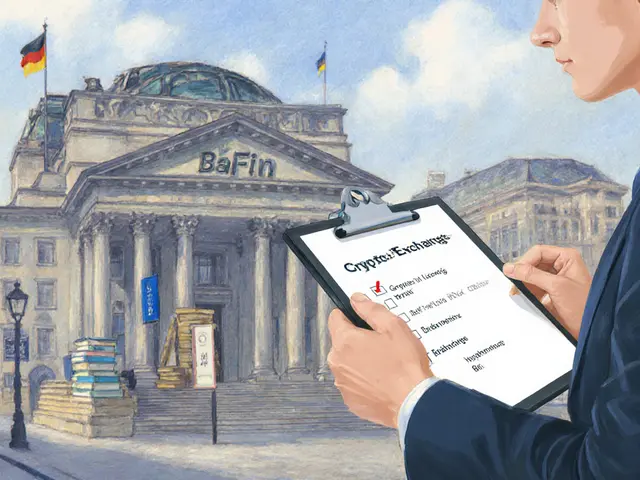PangolinSwap – Fast Swaps on Avalanche
When you hear about PangolinSwap, a decentralized exchange built on the Avalanche blockchain, also known as Pangolin, you’re looking at a platform that lets anyone trade crypto without a middleman. It works by matching buyers and sellers directly in smart contracts, which means no order books and almost instant execution. PangolinSwap distinguishes itself by offering sub‑second transaction finality and fees that are a fraction of the cost on older chains. At its core, the DEX relies on Liquidity Pools, smart‑contract vaults that hold paired tokens for users to trade against. These pools are supplied by community members who earn a share of the swap fees, creating a self‑sustaining ecosystem. The platform also supports Token Swaps, the direct exchange of one cryptocurrency for another without an order book, making it simple to move assets across the Avalanche network. By combining low latency, cheap gas and a user‑friendly interface, PangolinSwap has become a go‑to spot for traders who value speed and cost‑efficiency.
Why Avalanche Matters for a DEX
The success of PangolinSwap is tied tightly to Avalanche, a high‑throughput, low‑fee blockchain that uses a novel consensus called Avalanche. This consensus provides near‑instant finality, which is essential for a smooth swap experience—no more waiting minutes for confirmations. Avalanche also offers a flexible architecture that supports multiple virtual machines, allowing developers to launch custom assets and smart contracts with ease. Because the network can handle thousands of transactions per second, liquidity providers can add and withdraw funds without congesting the chain, keeping slippage low even during volatile market moves. In practice, this means that when you trade on PangolinSwap, the price you see is the price you get, and the transaction cost stays predictable. The synergy between the DEX and its underlying blockchain is a classic example of a platform‑layer relationship: the DEX requires a fast, cheap base layer, and Avalanche delivers exactly that, enabling broader adoption of decentralized finance tools.
Beyond the blockchain itself, PangolinSwap leverages advanced smart‑contract logic to manage Liquidity Pools, which automatically rebalance token ratios and calculate fees based on pool size and usage. This automation reduces the need for active market makers and opens the door for anyone to become a passive income generator. The pool contracts also integrate price oracles that pull data from multiple sources, ensuring that swaps happen at fair market rates. Users can check pool depth, see accrued fees, and withdraw liquidity at any time, giving them full control over their capital. The design encourages a vibrant ecosystem where new tokens can list quickly by simply creating a new pool, which in turn attracts more traders looking for fresh opportunities. This self‑reinforcing loop of liquidity and trading volume is what keeps PangolinSwap competitive against other DEXs on Ethereum or Binance Smart Chain.
Finally, PangolinSwap sits within a broader DEX landscape that includes platforms like Uniswap, SushiSwap, and Trader Joe. While each exchange shares the core idea of permissionless trading, they differ in how they source liquidity, calculate fees, and integrate additional features such as yield farming or staking. PangolinSwap’s focus on the Avalanche network gives it a unique edge: faster confirmations, lower gas, and a growing community of developers building DeFi primitives on the same chain. For traders, this translates into more reliable execution and the ability to move assets across multiple protocols without crossing high‑fee bridges. As the DeFi space continues to evolve, understanding how PangolinSwap interacts with its ecosystem, underlying blockchain, and liquidity mechanisms becomes essential for anyone looking to trade, provide liquidity, or build on top of this fast‑growing DEX. Below you’ll find a curated list of articles that dive deeper into each of these topics, from detailed token analyses to step‑by‑step guides on using PangolinSwap effectively.

Discover why Bzzone hasn't launched a traditional airdrop, learn its mining‑based token distribution, and find step‑by‑step tips to earn BZZONE tokens in 2025.
Jonathan Jennings Oct 23, 2025




